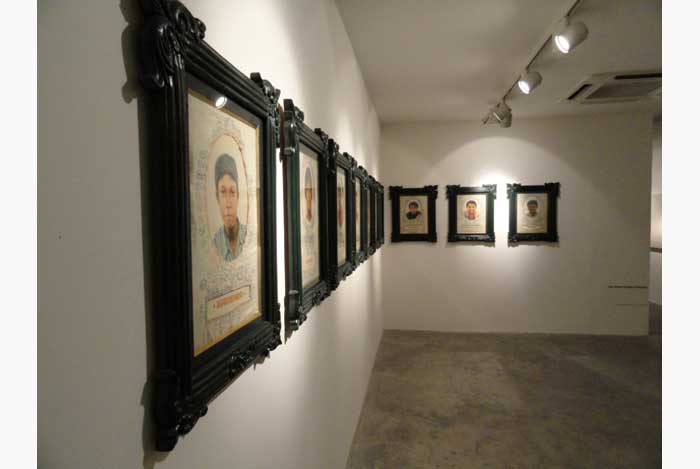Fresh from Tulia: The crafting of a new tale
CHENNAI: An urge to uphold Indian traditions mixed with environmental concern has urged a bunch of students of P S Senior secondary school to start a medicinal garden there. They also plan to plant such floral varieties in neglected alleys of the neighbourhood. Over 160 students of the school's eco-club started the herbal garden a week ago. Most of the members from classes 6, 7 and 8 plant the saplings and maintain the garden. As of now plants like Karpooravalli, Tulsi, Nandyavatta, Thiruneerpachai, Vasambu, Vallarai and alternanda, which
comprise the garden, are bought from private nurseries at Rs 10 to Rs 15. "We plan to get more medicinal plants, mostly rare ones. The gardens will be in unused stretches behind classrooms. The breeze that comes in after caressing the herbs will rejuvenate the students. Initially the saplings have been planted near and behind the principal's office," said C Sharan and R Mohan of class X and senior members of the eco-club.”[i]
This news clip gives us a trope through which one can engage with and historicize Muktinath Mondol’s artistic practice and his passions. This is the domain of contemporary revisiting of pre modernism; the need to archive its ‘scientific’ knowledge and its value systems is what gives fuel to his practice. However unlike the school kids of Chennai, Muktinath does not visit tradition as an outsider, rather he captures it and paints it as an insider’s tale, and yet it is a tale of changing memories. Thus it is tempting to begin this story placing the artist’s life, its journey and how it has shaped a body of work which is a sublime and deeply affecting portrait of the struggle between tradition and progress. Yes, we will have to come to that narrative too; nonetheless it is tempting to begin in a slightly different note.
The opening scene of Pather Panchali is the long single take which climaxes with of Apu and Durga running though fields of Kash flowers, rushing to see the galloping train which appears to them as a mysterious monster billowing smoke, momentarily dwarfing the pristine agrarian landscape. In the third part of this fabled trilogy, Aparajito (1957), Apu returns. He has grownup into a man, settling down into a career, and has come back on an occasion of deep loss and suffering. Apu enters the house of an aged relative of the family, and runs to the doorway on hearing the sound of the train in the distance. He calls excitedly to his mother, in anticipation of the sight he is about to see. But at the moment of the sighting, his face drains of animation. Of course, Apu has just been on the train, it is no longer a mysterious and wondrous object heralding new experiences. This graceful balance between nostalgic idealism and poignant realism has played a very important role in shaping up Munktinath’s aesthetic premises.
Though Pather Panchali is located in the misery of the rural poor, the lack of basic amenities such as adequate medical and other facilities, the condition of women and the position of the man in the family, the trend of rural-urban migration in search of employment.. The experimental neo realism of Ray and his artistic layering transform it in to universal narrative about family relations – the loving bond between a brother and a sister, about values and the tensions between tradition and modernity.[ii] This transformation is very crucial to understand the dialogue of ideology and aesthetic delight that is crucial to the formation of Muktinath’s artistic sensibilities and aspirations.
With Fresh from Tulia Muktinath weaves rich neo-mythological narratives, seeking to find his own language to tell stories of social reality through personal experience. Tulia is Mutinath’s home. Located somewhere between the bursting metropolis of Kolkata (still Calcutta to many) and Kharagpur (a township centered on a prestigious engineering college, railways and an Air Force base), electricity is
yet to reach Tulia. He grew up in an environment steeped in local folklore, religious beliefs and popular rituals, and influenced by the culture and hand-work of local craft traditions that were all-pervasive.
One can sense an artist being haunted by the instability of his own memories, striving to preserve what is fast being lost. Though Muktinath is one of the few artists who do not mask the Local as Global (or pretend that the Global can easily stand for the Local), what is refreshing is the manner in which he takes recourse to re-presentation, with a rare maturity that transforms deeply local narratives into an effective critique of contemporary progress. This hedonistic notion of progress is made possible by a careless (violent?) forgetting, where desire defeats nostalgia. Muktinath intervenes with his shades of greys, medallion compositions, using slippages and conjectures between myths and realities. Almost like a skilled homeopath, the artist the artist seeks to use longing to counter desire.

